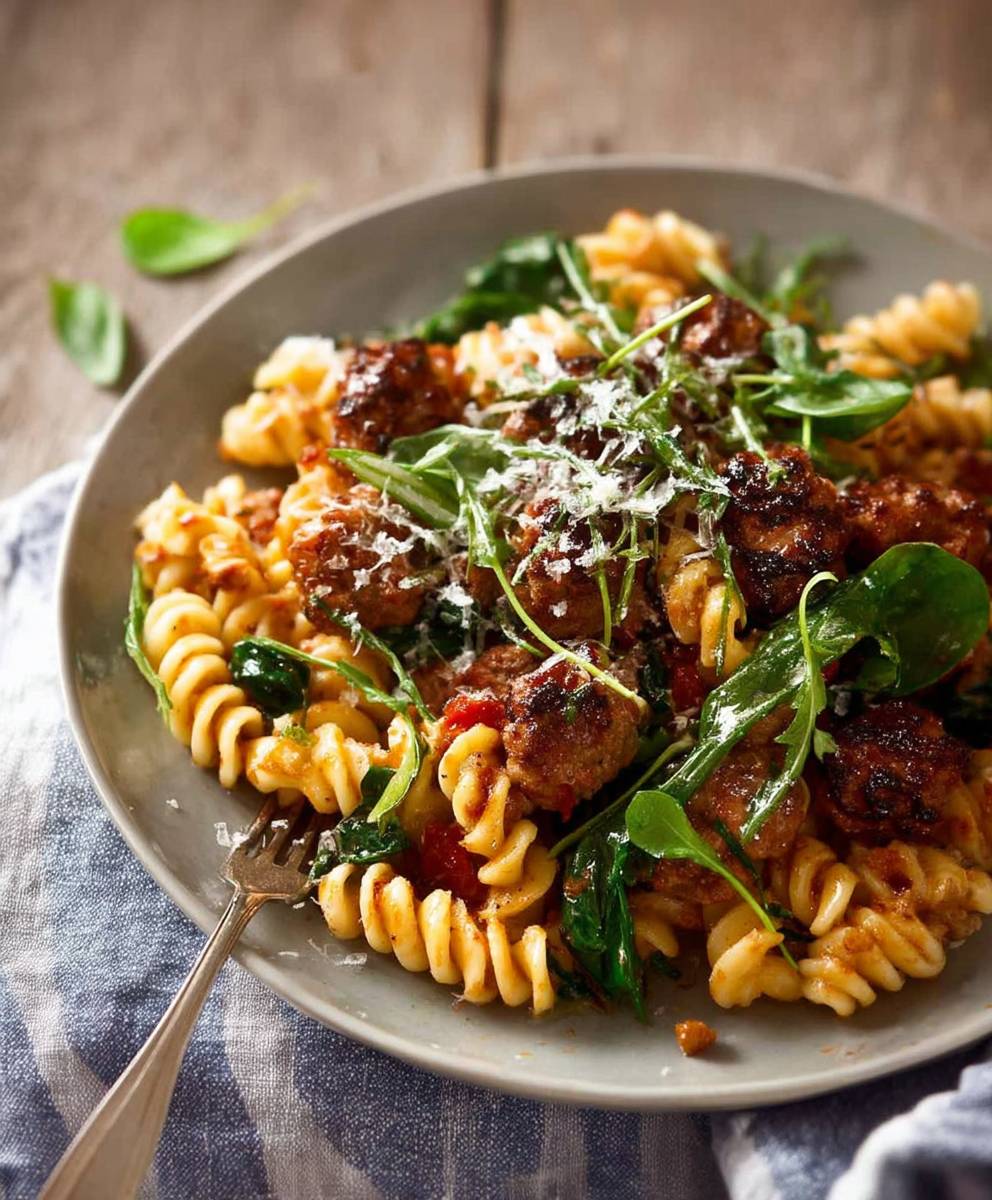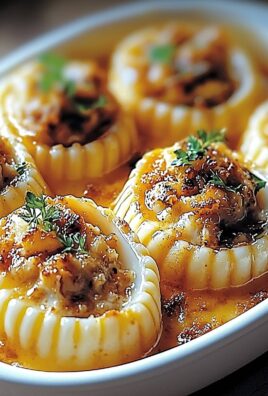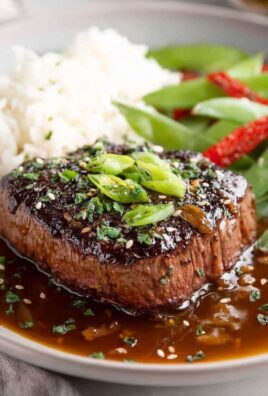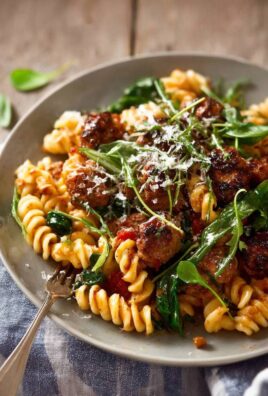Sausage pasta, a symphony of savory flavors and comforting textures, is about to become your new weeknight hero. Imagine twirling your fork around perfectly cooked pasta, each strand coated in a rich, tomato-based sauce brimming with juicy, browned sausage. Are you hungry yet? This isn’t just a meal; it’s an experience, a warm hug on a plate that satisfies both your cravings and your need for a quick and easy dinner.
While the exact origins of sausage pasta are debated, its roots clearly lie in the heart of Italian-American cuisine. Italian immigrants, seeking to recreate the flavors of home with readily available ingredients, likely developed variations of this dish. It’s a testament to their resourcefulness and culinary ingenuity, transforming simple ingredients into something truly special.
What makes sausage pasta so universally loved? It’s the perfect balance of flavors and textures. The savory sausage, often seasoned with fennel and other aromatic spices, provides a depth of flavor that complements the sweetness of the tomato sauce. The pasta, whether it’s penne, rigatoni, or spaghetti, offers a satisfying chewiness. And let’s not forget the convenience! This dish comes together quickly, making it ideal for busy weeknights when you need a delicious and satisfying meal on the table in under an hour. Get ready to discover your new favorite comfort food!
Ingredients:
- 1 pound Italian sausage (sweet or hot, casings removed)
- 1 pound pasta (penne, rigatoni, or your favorite shape)
- 1 large onion, chopped
- 2 cloves garlic, minced
- 1 (28 ounce) can crushed tomatoes
- 1 (15 ounce) can tomato sauce
- 1 (15 ounce) can diced tomatoes, undrained
- 1 teaspoon dried oregano
- 1/2 teaspoon dried basil
- 1/4 teaspoon red pepper flakes (optional)
- 1/2 cup dry red wine (optional)
- 1/4 cup chopped fresh parsley
- 1/4 cup grated Parmesan cheese, plus more for serving
- 2 tablespoons olive oil
- Salt and pepper to taste
- 1 cup reserved pasta water
Preparing the Sausage Sauce:
- Brown the Sausage: Heat the olive oil in a large skillet or Dutch oven over medium-high heat. Add the Italian sausage and cook, breaking it up with a spoon, until browned and cooked through. This usually takes about 7-10 minutes. Make sure to crumble the sausage well so you don’t have large chunks.
- Sauté the Aromatics: Remove the sausage from the skillet and set aside. Leave any rendered fat in the skillet. Add the chopped onion to the skillet and cook until softened and translucent, about 5-7 minutes. Stir occasionally to prevent burning.
- Add Garlic: Add the minced garlic to the skillet and cook for another minute, until fragrant. Be careful not to burn the garlic, as it can become bitter.
- Deglaze (Optional): If using red wine, pour it into the skillet and scrape up any browned bits from the bottom of the pan. This adds a lot of flavor to the sauce. Let the wine simmer for a few minutes until it reduces slightly. If you’re not using wine, just skip this step.
- Add Tomatoes and Seasonings: Add the crushed tomatoes, tomato sauce, and diced tomatoes to the skillet. Stir in the dried oregano, dried basil, and red pepper flakes (if using). Season with salt and pepper to taste. Remember, you can always add more seasoning later, so start with a little and adjust as needed.
- Simmer the Sauce: Bring the sauce to a simmer, then reduce the heat to low, cover, and let it simmer for at least 30 minutes, or up to an hour. The longer it simmers, the more the flavors will meld together. Stir occasionally to prevent sticking.
- Add Sausage Back In: After the sauce has simmered, return the cooked sausage to the skillet and stir to combine.
Cooking the Pasta:
- Boil Water: While the sauce is simmering, bring a large pot of salted water to a rolling boil. The salt is important for seasoning the pasta. Use plenty of water so the pasta doesn’t stick together.
- Cook Pasta: Add the pasta to the boiling water and cook according to package directions until al dente. Al dente means “to the tooth” in Italian, so the pasta should be firm but not hard.
- Reserve Pasta Water: Before draining the pasta, reserve about 1 cup of the pasta water. This starchy water is a secret ingredient that helps to thicken the sauce and make it cling to the pasta.
- Drain Pasta: Drain the pasta in a colander.
Combining and Serving:
- Combine Pasta and Sauce: Add the drained pasta to the skillet with the sausage sauce. Toss to coat the pasta evenly with the sauce.
- Add Pasta Water (if needed): If the sauce seems too thick, add a little of the reserved pasta water to thin it out and create a creamy consistency. Start with a 1/4 cup and add more as needed.
- Stir in Parsley and Parmesan: Stir in the chopped fresh parsley and grated Parmesan cheese.
- Serve: Serve the sausage pasta immediately. Garnish with additional grated Parmesan cheese and fresh parsley, if desired. A side of crusty bread is also a great addition for soaking up the delicious sauce.
Tips and Variations:
- Spice Level: Adjust the amount of red pepper flakes to your liking. If you prefer a milder sauce, omit them altogether. For a spicier sauce, use hot Italian sausage or add a pinch of cayenne pepper.
- Vegetables: Feel free to add other vegetables to the sauce, such as bell peppers, mushrooms, or zucchini. Sauté them along with the onions and garlic.
- Cheese: You can use other types of cheese in addition to or instead of Parmesan, such as Pecorino Romano or Asiago.
- Creamy Sauce: For a creamier sauce, stir in a dollop of heavy cream or mascarpone cheese at the end.
- Meat Options: While Italian sausage is classic, you can also use ground beef, ground turkey, or even chorizo.
- Make Ahead: The sauce can be made ahead of time and stored in the refrigerator for up to 3 days. Reheat before adding the pasta.
- Freezing: The sauce can also be frozen for up to 2 months. Thaw overnight in the refrigerator before reheating.
- Fresh Herbs: Using fresh herbs like basil and oregano will elevate the flavor of the sauce. Add them towards the end of the cooking process to preserve their flavor.
- Tomato Paste: For a richer, more concentrated tomato flavor, add 2-3 tablespoons of tomato paste to the skillet along with the onions and garlic. Cook for a few minutes to caramelize the paste before adding the other tomatoes.
- Wine Pairing: A Chianti Classico or a Sangiovese would pair well with this sausage pasta. The acidity of the wine will cut through the richness of the sauce.
Detailed Ingredient Notes:
- Italian Sausage: I prefer using sweet Italian sausage for a more balanced flavor, but hot Italian sausage adds a nice kick. Make sure to remove the casings before cooking. You can also find Italian sausage in bulk at some grocery stores.
- Pasta: Penne and rigatoni are great choices because their ridges help to hold the sauce. However, any pasta shape will work. Consider using a short, sturdy pasta shape.
- Tomatoes: Using a combination of crushed tomatoes, tomato sauce, and diced tomatoes adds depth and texture to the sauce. Look for high-quality canned tomatoes for the best flavor. San Marzano tomatoes are a great option if you can find them.
- Parmesan Cheese: Freshly grated Parmesan cheese is always best. Avoid using pre-grated cheese, as it often contains cellulose and doesn’t melt as well.
- Olive Oil: Extra virgin olive oil is preferred for its flavor, but regular olive oil will also work.
- Onion and Garlic: These are the foundation of the sauce and add a lot of flavor. Use fresh onion and garlic for the best results.
- Dried Herbs: Dried oregano and basil are essential for Italian cooking. Make sure your dried herbs are fresh for the best flavor.
Troubleshooting:
- Sauce is too thick: Add more reserved pasta water or a little bit of chicken broth to thin it out.
- Sauce is too thin: Simmer the sauce for a longer period of time to allow it to reduce and thicken. You can also add a slurry of cornstarch and water (1 tablespoon cornstarch mixed with 2 tablespoons cold water) to the sauce and simmer until thickened.
- Pasta is sticking together: Make sure you are using enough water when cooking the pasta and that the water is at a rolling boil before adding the pasta. Stir the pasta frequently during cooking to prevent sticking.
- Sauce is too acidic: Add a pinch of sugar to the sauce to balance the acidity. You can also add a small amount of butter or cream to mellow out the flavors.
- Sausage is not browning: Make sure the skillet is hot enough before adding the sausage. Don’t overcrowd the skillet, as this will lower the temperature and prevent the sausage from browning properly. Cook the sausage in batches if necessary.
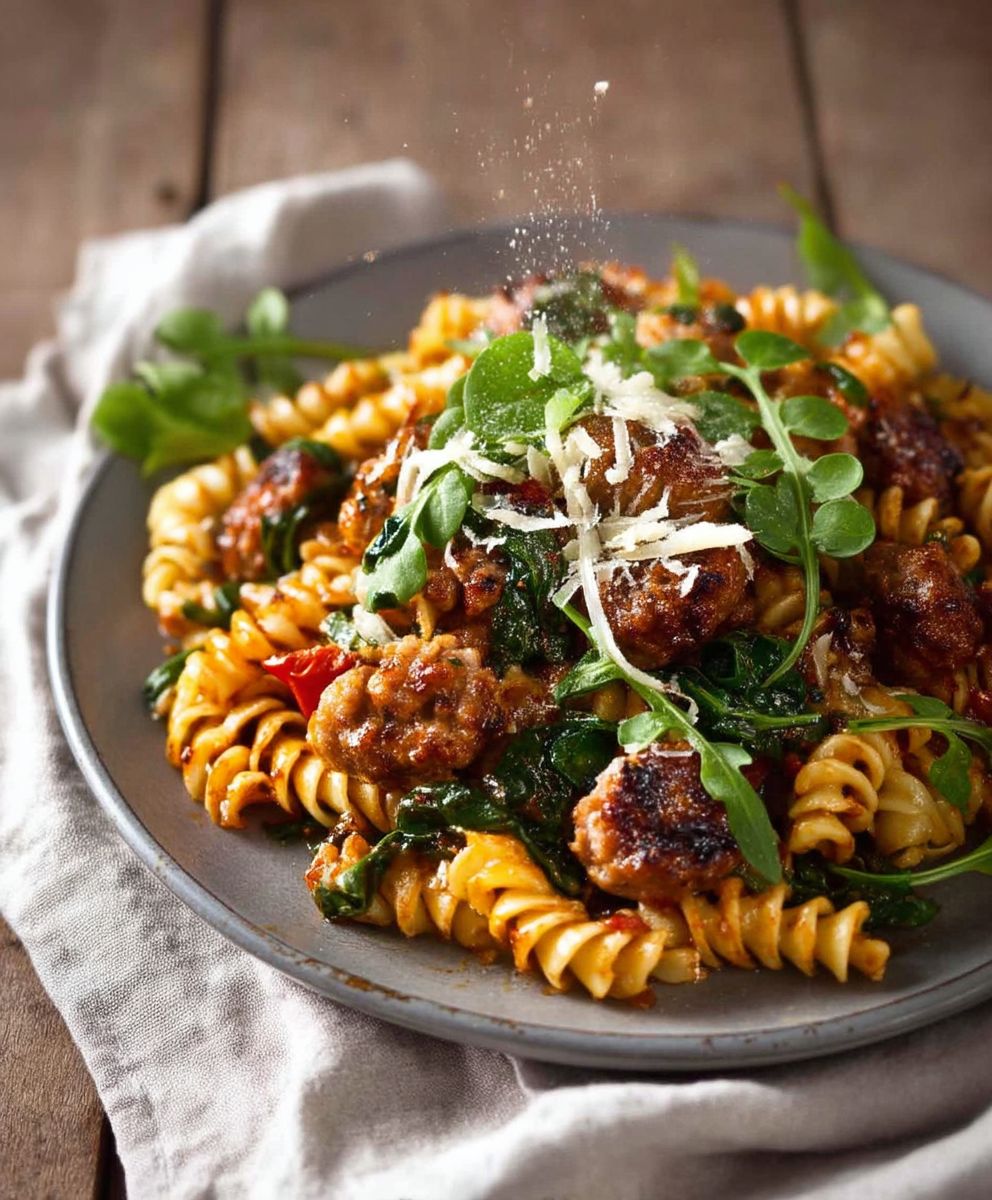
Conclusion:
This isn’t just another pasta dish; it’s a flavor explosion waiting to happen! The rich, savory sausage, perfectly balanced with the tangy tomato sauce and al dente pasta, creates a symphony of textures and tastes that will leave you craving more. I truly believe this sausage pasta recipe is a must-try for anyone looking for a quick, satisfying, and utterly delicious meal. Its the kind of dish that becomes a weeknight staple, a comforting hug in a bowl after a long day, and a guaranteed crowd-pleaser when you’re entertaining.
But the best part? It’s incredibly versatile! Feel free to get creative and adapt it to your own preferences. For a spicier kick, add a pinch of red pepper flakes or use hot Italian sausage. If you’re a cheese lover (and who isn’t?), a generous sprinkle of freshly grated Parmesan or Pecorino Romano will elevate the dish to new heights. You could even stir in a dollop of creamy ricotta cheese just before serving for an extra layer of richness.
Looking for some serving suggestions? This sausage pasta pairs beautifully with a simple green salad dressed with a light vinaigrette. A crusty loaf of bread is also a must for soaking up all that delicious sauce. And for a truly Italian feast, why not serve it with a side of roasted vegetables like broccoli or bell peppers?
Variations to Explore:
* Vegetarian Option: Swap the sausage for plant-based sausage crumbles or add extra vegetables like mushrooms, zucchini, or spinach.
* Creamy Version: Stir in a splash of heavy cream or half-and-half at the end for a richer, more decadent sauce.
* Baked Pasta: Transfer the cooked pasta and sauce to a baking dish, top with mozzarella cheese, and bake until bubbly and golden brown.
* Different Pasta Shapes: While I love it with penne, feel free to experiment with other pasta shapes like rigatoni, fusilli, or even spaghetti.
I’m so excited for you to try this recipe! I poured my heart into perfecting it, and I know you’ll love it as much as I do. Don’t be afraid to experiment with different ingredients and variations to make it your own. Cooking should be fun and creative, so let your imagination run wild!
Once you’ve given it a try, I’d absolutely love to hear about your experience. Did you make any modifications? What did you think of the flavor? What did you serve it with? Share your photos and stories in the comments below! Your feedback is invaluable, and it helps me continue to create recipes that you’ll love. So go ahead, grab your ingredients, and get cooking! I promise, this sausage pasta will become a new favorite in your household. Happy cooking, and buon appetito! I can’t wait to see what delicious creations you come up with! Remember to tag me in your photos so I can see your culinary masterpieces! Let’s spread the love of good food, one delicious pasta dish at a time.
Sausage Pasta: The Ultimate Guide to Delicious Recipes
Hearty and flavorful Italian sausage pasta with a rich tomato sauce, perfect for a comforting weeknight meal.
Ingredients
- 1 pound Italian sausage (sweet or hot, casings removed)
- 1 pound pasta (penne, rigatoni, or your favorite shape)
- 1 large onion, chopped
- 2 cloves garlic, minced
- 1 (28 ounce) can crushed tomatoes
- 1 (15 ounce) can tomato sauce
- 1 (15 ounce) can diced tomatoes, undrained
- 1 teaspoon dried oregano
- 1/2 teaspoon dried basil
- 1/4 teaspoon red pepper flakes (optional)
- 1/2 cup dry red wine (optional)
- 1/4 cup chopped fresh parsley
- 1/4 cup grated Parmesan cheese, plus more for serving
- 2 tablespoons olive oil
- Salt and pepper to taste
- 1 cup reserved pasta water
Instructions
- Heat the olive oil in a large skillet or Dutch oven over medium-high heat. Add the Italian sausage and cook, breaking it up with a spoon, until browned and cooked through (7-10 minutes). Remove sausage and set aside.
- Leave rendered fat in the skillet. Add the chopped onion and cook until softened and translucent (5-7 minutes).
- Add the minced garlic and cook for another minute, until fragrant.
- If using red wine, pour it into the skillet and scrape up any browned bits. Let the wine simmer for a few minutes until it reduces slightly. Skip if not using wine.
- Add the crushed tomatoes, tomato sauce, and diced tomatoes. Stir in the dried oregano, dried basil, and red pepper flakes (if using). Season with salt and pepper to taste.
- Bring the sauce to a simmer, then reduce the heat to low, cover, and let it simmer for at least 30 minutes, or up to an hour, stirring occasionally.
- Return the cooked sausage to the skillet and stir to combine.
- While the sauce is simmering, bring a large pot of salted water to a rolling boil.
- Add the pasta to the boiling water and cook according to package directions until al dente.
- Before draining, reserve about 1 cup of the pasta water.
- Drain the pasta in a colander.
- Add the drained pasta to the skillet with the sausage sauce. Toss to coat.
- If the sauce seems too thick, add a little of the reserved pasta water to thin it out and create a creamy consistency.
- Stir in the chopped fresh parsley and grated Parmesan cheese.
- Serve immediately, garnished with additional Parmesan cheese and fresh parsley, if desired.
Notes
- Spice Level: Adjust red pepper flakes to taste.
- Vegetables: Add bell peppers, mushrooms, or zucchini, sautéing them with the onions and garlic.
- Cheese: Use Pecorino Romano or Asiago instead of or in addition to Parmesan.
- Creamy Sauce: Stir in a dollop of heavy cream or mascarpone cheese at the end.
- Meat Options: Use ground beef, ground turkey, or chorizo.
- Make Ahead: The sauce can be made ahead and stored in the refrigerator for up to 3 days or frozen for up to 2 months.
- Fresh Herbs: Use fresh basil and oregano for elevated flavor.
- Tomato Paste: Add 2-3 tablespoons of tomato paste to the skillet along with the onions and garlic for a richer flavor.
- Wine Pairing: A Chianti Classico or a Sangiovese would pair well with this sausage pasta.
- Sauce is too thick: Add more reserved pasta water or a little bit of chicken broth to thin it out.
- Sauce is too thin: Simmer the sauce for a longer period of time to allow it to reduce and thicken. You can also add a slurry of cornstarch and water (1 tablespoon cornstarch mixed with 2 tablespoons cold water) to the sauce and simmer until thickened.
- Pasta is sticking together: Make sure you are using enough water when cooking the pasta and that the water is at a rolling boil before adding the pasta. Stir the pasta frequently during cooking to prevent sticking.
- Sauce is too acidic: Add a pinch of sugar to the sauce to balance the acidity. You can also add a small amount of butter or cream to mellow out the flavors.
- Sausage is not browning: Make sure the skillet is hot enough before adding the sausage. Don’t overcrowd the skillet, as this will lower the temperature and prevent the sausage from browning properly. Cook the sausage in batches if necessary.

